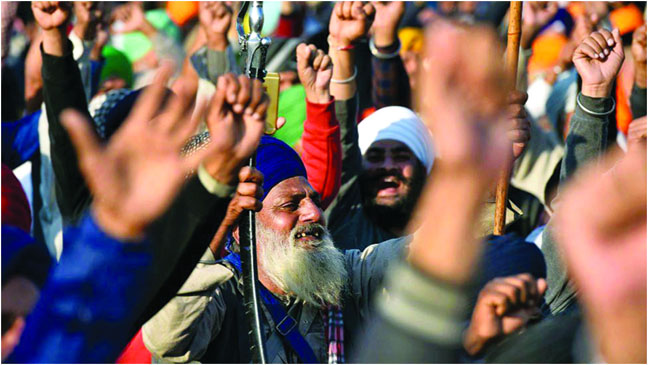Indian farmers have been on the road since November last year, seeking repeal of three new farm laws and demanding minimum support prices for their produce. Leaders from the ruling Bharatiya Janata Party (BJP) say the new farms laws will double farmers’ income – a promise made by Prime Minister Narendra Modi in 2016.
So is there any evidence that rural livelihoods have been improving?
What’s happened to rural incomes?
More than 40% of India‘s workforce is engaged in agriculture, according to the World Bank.
There are no official figures for rural household income in recent years, but there is data on agricultural wages (an important part of rural income) which shows the rate of growth slowing down between 2014 and 2019.
And India has seen rising inflation in the last few years, with World Bank data showing that consumer price inflation grew from just under 2.5% in 2017 to nearly 7.7% in 2019.
This has eaten into wage gains.
India conducted surveys in 2013 and 2016 which showed an increase in farmers’ incomes in absolute terms of nearly 40% over that period.
However, a report by the Organisation for Economic Co-operation and Development (OECD) in 2018 estimated that in real terms, farmers’ incomes increased by just 2% a year over those three years.
The report also makes clear that these farmers’ incomes were just one-third of those for non-agricultural households.
Agricultural policy expert Devinder Sharma believes farmers’ incomes in real terms have remained stagnant or even declined for several decades.
“An increase of a couple of thousand [rupees] a month doesn’t make much difference if we account for inflation,” he says.
He also points to the rising costs that farmers face, as well as the wildly fluctuating prices they receive for their produce.
It’s also worth adding that in recent years, there have been periods of extreme weather such as droughts, which have seriously affected livelihoods.
